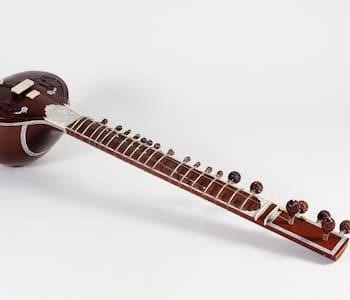Culture
Culture
Gwalior art culture
- Gwalior is a well acknowledged place of art, associated with historic as well as contemporary evidence.
- In August 2005 a mural created by Aasutosh Panigrahi along with five other artist, was acknowledged as World’s Largest Indoor Mural by Guinness Book of Records.
- The artwork was created at ShyamVatika (Saraswati Estate, near GolaKaMandir). ShyamVatika is one of the largest Auditorium of Gwalior.
- Gwalior holds an unparalleled reputation in Sangeet and the legendary musician Tansen came from Gwalior. In his memory Tansen Samaroh is held every year.
- Sarod Maestro UstadAmjad Ali Khan was also from the royal city of Gwalior. His grandfather Ghulam Ali Khan Bangash became a court musician in Gwalior.
- Culturally Gwalior is the confluence of two rich cultures Bundeli and Braj. Bundelkhand covers Gwalior, Bhind, Morena, Sagar, Shivpuri, Guna, Sheopur and adjoining areas.
Folk Dances
Ahiri Dance
-
- This dance is related to people who have traditionally been in the business of cattle herding.
- In different parts of the state these people are known by different castes such as Ahir, Baredi, Gwal, Rawat, Raut, Gwala etc.
-
- These people believe that they are the descendents of Lord Krishna.
Baredi or Yadav dance of Bundelkhand
-
- This dance has been associated with the biggest Hindu festival “Diwali”.
- On the night of Diwali people worship Laxmi, the Hindu goddess of wealth (after all no body can live without money), and cattle.
- Next day on the occasion of “Padva” or “Parva” cattle are sent to jungles or ranches after being decorated with flowers and garlands.
-
- They are given special dishes as food. Yadav dance is performed on the same occasion.
-
- Dancers dance in a circular path while singing songs. Sometimes they sit or lie down on earth and suddenly they restart their dance.
- Rhythm of the song is very low in starting and increases with time. Music instruments are started only when two lines of the song are finished.
- Primarily these are two line couplets. Sometimes these are in form of questions and answers. This dance continues till KartikPurnima.
Dress – Dancers, instrument beaters and their associates wear a clean turban on head. Some people like to put on Dhoti up to knees (long cloth wore by men enwrapping their waist). Some people specially dancers wear colorful shorts. Dancers also keep bunch of peacock feathers.
Music Instruments Mradang, Dholak, Ramtula, Dhapli, Manzira, Jhanz etc. are used in this dance.
Saharia Dances
- Saharias are tribal people who live in jungles. They work in farms and also collect medicinal plants from jungles.
- There are several dances of Saharias. Some of the important ones are: Lur Dance, Lanhgi Dance, Dul-DulGhodi Dance, Raya Dance, Ada-Khada Dance.
Lur dance of Saharias
- This dance is performed on the occasion of marriage starting from the day of ritual of “Haldi” (In this ritual whole body is pasted with turmeric and after sometime it is removed so the body is cleaned) till the arrival of Barat (Bridegroom comes to the house of the bride with his relatives and friends for marriage ceremony).
Lanhgi dance of Saharias
- This dance is also known as Danda(baton) dance because Saharias dance with small batons in their hands with which they strike at each other and perform Lanhgi dance.
- Only men are allowed in it. This dance is performed on the occasion of Bhujarias, Tejaji puja and Aekadashi etc.
Dul-DulGhori dance
- This dance is performed on the occasion of marriage by males.
- In this dance a hollow case of ghori (mare) is prepared of bamboo sticks.
- The dancer stands in the hollow place and dances.(depicts various movements of mare.) There is also a joker in women clothing. People sing folk songs during the dance.
Folk Poets
Jagnik
- Jagnik was a folk poet of 11th-12th century. At that time some poets used to write biographies of folk warriors.
- These biographies were called “Raso”. Jagnik wrote “Parmalraso” or “Alha khan” Which contains the description of 52 battles fought by Bundeli war heroes Alha and Oodal.
- The style of singing alhakhand has a unique distinction and it is very popular in the region. Dholak, timaki, jhinka, and majira are its musical instruments.
- People who sing alha are called “Alhet”. Lalloovajpayi is a very famous alhet.
Local Festivals, Art and Music
There are innumerable festivals celebrated by Gwaliorites but among the long list, the main festivals celebrated in the city are Tansen Festival, BhavbhutiSamaroh, Baba HiraBhumia’s Fair, Rang Panchmi, Ganesh Chaturthi, Diwali, Navratri, etc.
Culture of Gwalior
Gwalior is well-known for its unique culture, owing to the influences of various dynasties. It is a melting pot of distinct cultures and traditions.
Historic as well as contemporary art is popular in the city. The world’s largest indoor mural was created in Gwalior. ‘Drupad’ is a vocal genre that is believed to be the oldest continuing musical genre of Hindustani classical music.
Tansen, the world-famous vocalist of the court of Akbar, was from Gwalior. In his honour, Tansen Music Festival is held every year.
Folk dance is also popular in the city. Some of the dance forms are Ahir folk dance, Baredi dance and Saharia dance.
MakarSankranti, Holi, Diwali and Rakhi are some of the festivals of Gwalior. The city also has a rich poetic tradition and many revered poets belonged from here.

Gwalior Culture
- The Culture of Gwalior is characterized with a fine composite of Bundeli and Braj cultures wherein the indigenous religious, historical, architectural and artistic bequest of Gwalior is reflected through its illustrious tradition of art, music, dance, poetry and festivals.
- Music: Gwalior; ‘the City of Music’ and the felicitous land of Tansen and BaijuBawra boasts of its unsurpassed standing in the domain of the ‘Hindustani Classical Music’.
- Tansen; the Father of the Indian Classical Music who blossomed in the Court of Akbar as the greatest musician, composer, vocalist and instrumentalist of India was born in a town near Gwalior and was also buried in Gwalior after his demise.
- Gwalior City celebrates the Tansen Music Festival every year in the honor of this most luminous star in the firmament of Indian Classical Music.
- The legendary classical singer of India – BaijuBawra lived in Gwalior and prospered under the patronage of King Man Singh Tomar. Ghulam Ali Khan Bangash was an eminent court musician of Gwalior whose grandson UstadAmjad Ali Khan has attained worldwide fame for his excellence in the field of ‘SarodVadan’.
- The Gwalior Gharana emerged and developed during the reign of Emperor Akbar which happens to be one of the oldest Khayal Gharanas and most of the Classical Indian Musicians owe their trend and approach to the Gwalior Gharana.
- Dhrupad; the oldest musical tradition of India still in use is a vocal genre that was propagated and patronized during the supremacy of Raja Man Singh Tomar.
- Tansen Music Festival organized by the Madhya Pradesh State Government in collaboration with the Department of Culture provides a platform to the artists and musicians to showcase their talents and earn immense praise and repute.
- Musicians and singers from all over the country congregate at Gwalior on the occasion of this music carnival and present vocal as well as instrumental performances in front of the music lovers gathered here from far and wide.
- Tansen Music Festival is honored to be the only musical show of India that continues for several days and nights. Dating back to 1930s, this music festival celebrated in the month of December offers a real treat to the eyes and ears of the lovers and admirers of music.
Handicraft:
- Gwalior is also commended for its Papier Mache Artifacts, Leather Work and Hand Woven Carpets.
- Tourists make it a point to buy Chanderi & Maheswari Saris, Tussar & Kosa Silk, Lacquer Ware, Dolls, Dokra Statuettes, Ethnic Ornaments, Wall Hangings, Handmade Carpets, Tribal Jewelry, Hand-Woven Saris, Other Fabrics, etc. from here.
Trips
& tours
Choose M.P Holidays®
- Approved by “The Ministry of Tourism” (Approval No: 2203270HE874)
- “The Official No.1 Channel Partner” of M.P Tourism (Registration No: MP-TOUR-20221/131888)
- We are Awarded “The Best Travel Agent” by M.P. Government for the three consecutive years. (2016, 2017 and 2018)
- Having offices at
- Surat
- Indore
- Ahmedabad
- Pachmarhi
- Nagpur
- Kanha
- Own resort at Madhya Pradesh






